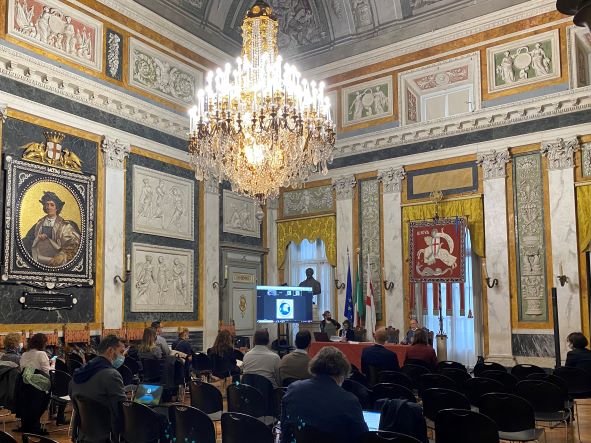
DEMO-EC: Final conference of the project
Partners gathered together in Genoa, Italy to show results of the project.
The population of cities increases in Europe, which is a big challenge for the organization of transport in urban areas. For environmental friendly transport and to reduce CO2-consumption the alternatives for normal cars have to be introduced. A crucial aspect is to foster the combination of different environmental transport modes like public transport, cycling and also new arise mobility solutions. One way to combine these modes is a mobility management approach. The challenge here is that in city administrations a lack of instruments and unclear responsibilities exist. For successful implementation of mobility management also different actors and user groups has to involve like companies and inhabitants as end users.
DEMO-EC fosters low-carbon transport in cities through integration of mobility management by combining the fields of mobility behaviour change, governance, e-mobility, car reduction, walking, cycling and public transport.
€1,548,296.00
Low-carbon economy
... of the project DEMO-EC is to integrate mobility management in city development/planning by analyzing, exchange and dissemination of good practice to improve the effectiveness of policies in the field of low-carbon in transport. The envisaged impact of the project is to positive influence policies to envisage low-carbon alternatives for transport mobility by supporting cleaner transport modes and systems, and by promoting alternative mobility behavior. To reach these aims the partners of DEMO-EC collect Best-practices from local, regional, national and European level in the fields of Behavior change, Governance/participation, E-Mobility, Car reduction (walking, cycling) and Public transport. The partners, consist of cities and regional development agencies from 6 different countries, exchange their experiences and results of the best practice analysis to improve policy programmes by developing 7 regional action plans. The experienced and best-practices gained in the project also helps cities to improve their instruments and realize mobility management in their cities and regions.
The operational Programme of Saxony promote smart sustainable and inclusive growth and follows the EU2020 strategy by fostering intelligent, sustainable, and integrative growth in Saxony. Three main challenges are described in the programme:
1. demographic change, regional disparities, same chances for development in all regions
2. Intelligent growth as answer for economical pressure in global economy
3. Climate change, risk prevention and environmental impacts
The Operational Programme (ROP) of Saxony aim within the Priority Axis 2 Promotion to Reduce CO2- emissions to lower CO2 emission in transport sector through promoting public transport and fostering E-Mobility. This is also mentioned in specific objective 2 E of the Operational Programme of Saxony for sustainable City development, that also pronounce the combination from E-Mobility, traffic reduction, intelligent traffic systems, cycling, pedestrian traffic to lower carbon dioxide emissions and implementing new environmental-friendly mobility. This is exactly what mobility management does and is aimed in the project, by combining these aspects.
The operational programme gives the framework for activities regarding the topic mobility management. But it described no concrete investments and opportunities to implement the envisaged aims. With DEMO-EC we have the possibility to test and build up model solution and instruments for further funding and transfer in other regions in Saxony.
The concept enlarged car reduced downtown has a status of a general master plan of transport for the inner city of Leipzig within the Tangentenviereck, an area about ten times bigger than the city center. The first concept has been adopted in 1993 and was further developed with formal approval of progressing the concept in 2008. The general objective is to reduce car traffic in the inner city of Leipzig to a minimum and create a better place for living and an attractive vibrant economical center in Central Germany.
It includes all modes of transport:
1. Car traffic: limitation to a minimum just for accessibility to city and other transport options, for inhabitants and freight transport for inner city companies.
2. Cycling: Access and crossing of inner city of Leipzig, without interfering with pedestrian traffic.
3. Pedestrian traffic: Highest priority against other modes of transport.
4. Public transport: Access to the city center.
5. Parking management: Further parking options around the city center.
Because of the expected growth of City of Leipzig by 150,000 to 200,000 inhabitants in the next 15 years there is a need to further discuss and enlarge the concept of car reduced downtown beyond the existing borders to taking the traffic pressure away from the city center and alleviating the area from motorized traffic. This will include further pedestrianized areas outside the city center and an enlargement of the zone of parking management.
It presents the priority axes of investment priorities where Slovenia will invest the EU Cohesion Policy funds in the period 2014-2020 with the objective of realising national targets set within EU2020 objectives. It is the basis for continuation of coordination at national level (ministries/other stakeholders) and coordination with EU Commission. Slovenia prepared one OP for absorption under all three EU Cohesion Policy Funds (ERDF/ESF/Cohesion Fund).
Slovenia’s development context puts prosperity in the focus, it is realised through following strategic objective1: finding way to economic recovery/breaking the trend of Slovenia’s distancing from average EU development level; ensuring prosperity of all citizens; putting decisive stop to passive, cyclical changes by transforming them into lasting structural improvements. It consists of 11TO`s, a few investments priorities under each TO.
The improvement is focusing on TO 4, invest. priority “Promoting low-carbon strategies for all types of geographical area, in particular for urban areas, including promotion of sustainable multimodal urban mobility/adequate mitigation/adaptation measures«. Specific results indicators are not set adequate and should be improved to be realistically achieved. For some of them there are no technical/ logistics possibilities to be implemented on national level. Some of supporting/technical manuals/guidelines/methodologies are missing on national level to develop different strategic mobility plans.
It has its specific objective with the goal of: Improve energy efficiency/CO2 emissions reduction in buildings/infrastructure/public services.
One of the priorities of ERDF investment is precisely the promotion of carbon reduction strategies for all types of land, especially in urban areas, including promoting sustainable multimodal urban mobility. This latter aspect could be exploited by moderate relief of part of the territory, in particular of Zaragoza, where the population of the region is concentrated. All these objectives can be implemented in the specific sector of the mobility management and its role in zoning. The application is even more useful when developing the activities in the context of a city: we want to improve the est. of public services/ resources based in the use of energy efficiency technologies solutions. The implementation of the activities in this project will complete this instrument with the promotion of the networking and clustering activities among the stakeholders for urban and regional planning.
DEMO-EC take also especial interesting if consider their transferability for the mobility management in rural areas, where transport with reduction with CO2 emissions are demanded as the most sustainable options, and the role of the public institutions are crucial for its success.
We want to contribute in the effective implementation of the policy instrument by improving the energy efficiency and reduction of CO2 emissions in transport and mobility.
Municipality of Lublin left the DEMO-EC project. New partner from Polan is Municipality of Milanowek.
It aims to create jobs and increase productivity. It is concentrated of Research and Development, Diversification and Competitiveness of SMEs. Moreover, the Programme promotes the development of ICT infrastructures/services and risk prevention interventions, and foresees a new approach to urban development giving a greater emphasis to the energy field.
In particular, the Programme focuses on 5 thematic priorities:
- RTD and innovation,
- ICT,
- SMEs competitiveness,
- Sustainable energy and quality of life (Low-carbon economy),
- Climate change and risk prevention.
The present project concerns the Axis 4 “Energy” and, specifically, its SubObjective “The growth of sustainable mobility in urban areas”. The main project aim is to support the transition to a low-carbon economy in transport and mobility sectors, by developing integrated sustainable policies (e-mobility, cycling, sharing options, …) and including them into the regional planning instruments, creating the assumptions for their wide-spread adoption at regional level.
Therefore the main project outputs will be regional action plans, which will be the drivers to foster this transition, having significant impacts at different levels by:
- enriching regional programmes with innovative policies/tools that will benefit all Municipalities/Provinces,
- supporting behavioural changes in everyday mobility, with consequent positive effects in pollutant emissions,
- creating business opportunities in the sustainable mobility sector.
The Development of low carbon policies in cities is the main goal of this priority. The installation of charging points and development of the network of these stations (electricity and gas - CNG and LNG) is the key issue for the acceptation of the alternative fuels by public, for the following development and utilisation of new technologies. This plan is in-line with environmental strategies of the Czech Republic and with the national limits of emissions.
The aims of the planned interventions are:
a) creation of the conditions for wider utilisation of vehicles using the alternative fuels in road transport, especially in cities,
b) contribution to reach the goals stated in the EU 2020 Strategy.
The supported activities realised under Specific objective 2.2 - Development of conditions for wider utilisation of vehicles with alternative fuels on road network will be focused to deploy charging stations for alternative motors in the roads infrastructure, including park and ride and parking places. The problems and congestions arise especially in areas with high density of population and have negative impact on environment and public health. The problems of the City transport are not solved in detail in the respective OP, the specific strategies are to be descripted in strategic documents of the respective cities. The policy instrument has to contribute to reduction of pollution (especially CO2) from transport and to follow the EU programmes on environment.
Transport development Strategy for area of Warsaw’s suburban Garden Tri-city is an instrument developed within the project The Warsaw’s suburban Garden Tri-city – improvement of the coherence of the area through cooperation in: social policy, shaping of the public space, water management and transport. The policy was adopted by three cities: Milanówek, Brwinów and Podkowa Leśna. The policy’s task was to prepare the plan for actions in order to develop an effective and useful transportation system. Best available solutions in fields of organization, infrastructure and planning were considered during developing of the policy. It determines the idea and mission of the Warsaw’s suburban Garden Tri-city’s transport development defining objectives, instruments and methods.
Milanówek faced various problems when realizing projects of the strategy - especially those of bicycle paths. Land ownerships and construction standards were the most common issues. In order to avoid these problems the municipality has to rearrange the planning of bicycle traffic. The municipality also has to provide safer bicycle traffic through actions like information campaigns and establishing of Bicycle Education & Road Safety Centre for youth, where children could learn how to bicycle safely in traffic. To keep the character of garden city the municipality has to redesign the traffic in the city. Therefore during the project a new concept for road traffic in the city will be elaborated.

Partners gathered together in Genoa, Italy to show results of the project.
“Cycle paths in Genoa” (realized and designed/under construction)
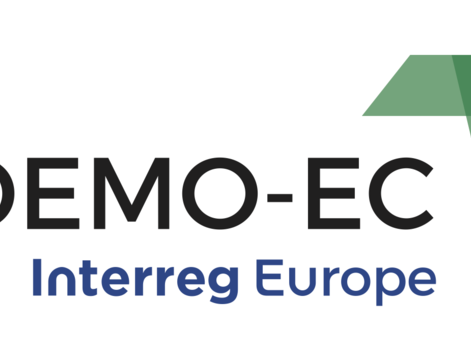
The DEMO-EC partnership successfully applied for the call and will continue its cooperation until late 2022.

Responsibus is a service that enables public transport that adapts to the needs of users. The web application is available on smart stands located in hotels.
FAMCP and Zaragoza participated in the Seminar Cycling Cities with the Good Practice The Bicycle Master Plan
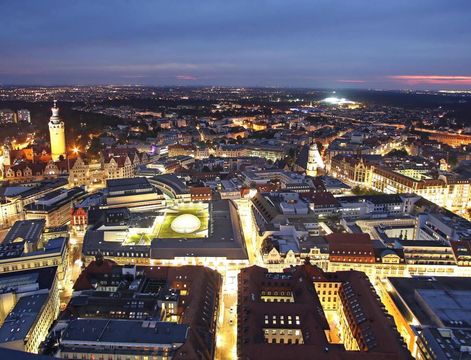
Aufbauwerk Region Leipzig: Three actions are foreseen to be implemented by the end of 2021, which focus on the topics of multimodal and non-motorized transport.
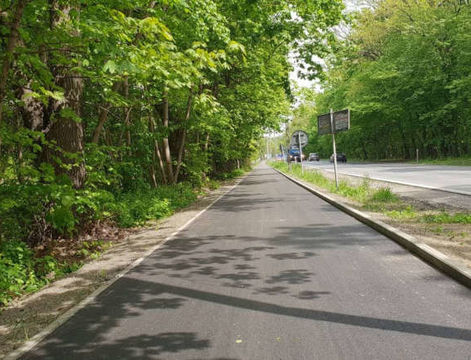
Milanówek has built 90% of bicycle path along the main street of Milanówek. We also choose the constructor of a bicycle shelter for 25 bicycle places.

Due to the covid 19, project partners of DEMO EC gathered through ONLINE.
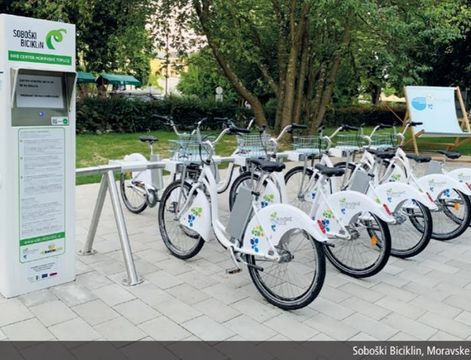
Succesfully finalized Action 1: Establishment or extension of a bicycle rental system
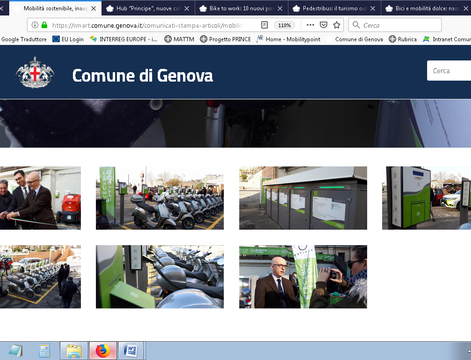
Genoa Municipality realized different actions and incentives to promote e-mobility and use of all type of e-vehicles.